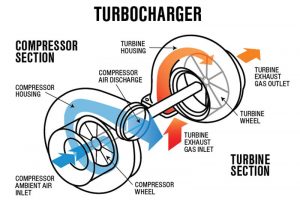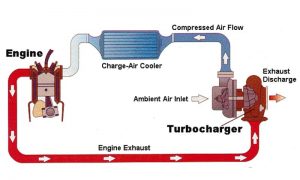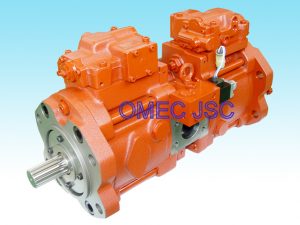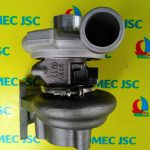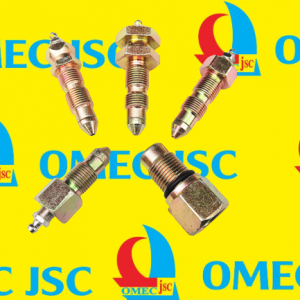Turbocharger basic knowledge
Turbocharger is a key components used to increase engine power and reduce emissions. Turbocharger itself is not a power source, which uses residual energy of the engine exhaust to work, its role is to provide more air to the engine. It uses the engine exhausts energy, drive turbo high-speed rotating , and turbine driven coaxial compressor impeller high-speed rotation. Compressor press the air to the engine cylinder, the engine of inflation increase the amount of fuel available to more complete combustion.Thereby increasing engine power, reducing fuel consumption, and because the improvement of combustion conditions, which reduce the exhaust emissions of harmful substances, and can also reduce the noise.
The performance of turbocharged diesel engine changed after supercharging. It makes the engine power has greatly increased. Supercharged engine’s power can be increased about 20% ~ 40%. WD615 machine, for example, the engine’s mechanical efficiency, Turbocharged Engine auxiliary systems increase very little power in consumption, although since the outbreak of pressure, the friction surface, friction losses increase, but the large increase in engine power, mechanical efficiency increased nearly 8%. Reduce fuel consumption, increased air pressure to backward booster, improve combustion conditions, mechanical efficiency, reduce oil consumption. But it also brought an engine with new problems, such as: the engine’s mechanical load increase, the heat load increases and so on.
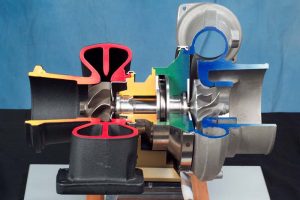
Turbocharger Working Principle
A turbocharger consists of a turbine and a compressor linked by a shared axle. The turbine inlet receives exhaust gases from the engine exhaust manifold causing the turbine wheel to rotate. This rotation drives the compressor, compressing ambient air and delivering it to the air intake of the engine, resulting in a greater amount of the air/fuel mixture to enter into the cylinder. The objective of a turbocharger is the same as a normal supercharger; to improve upon the size-to-output efficiency of an engine by solving one of its cardinal limitations. A naturally aspirated automobile engine uses only the downward stroke of a piston to create an area of low pressure in order to draw air into the cylinder. Because the number of air and fuel molecules determine the potential energy available to force the piston down on the combustion stroke, and because of the relatively constant pressure of the atmosphere, there ultimately will be a limit to the amount of air and consequently fuel filling the combustion chamber. This ability to fill the cylinder with air is its volumetric efficiency. Because the turbocharger increases the pressure at the point where air is entering the cylinder, and the amount of air brought into the cylinder is largely a function of time and pressure, more air will be drawn in as the pressure increases. The additional air makes it possible to add more fuel, increasing the output of the engine. Also, the intake pressure can be controlled by a wastegate, which controls boost by routing some of the exhaust flow away from the exhaust side turbine. This controls shaft speed and regulates boost pressure in the inlet tract.
The application of a compressor to increase pressure at the point of cylinder air intake is often referred to as forced induction. Centrifugal superchargers operate in the same fashion as a turbo; however, the energy to spin the compressor is taken from the rotating output energy of the engine’s crankshaft as opposed to exhaust gas. For this reason turbochargers are ideally more efficient, since their turbines are actually heat engines, converting some of the thermal energy from the exhaust gas that would otherwise be wasted, into useful work. Contrary to popular belief, this is not totally “free energy,” as it always creates some amount of exhaust backpressure which the engine must overcome. Superchargers use output energy from an engine to achieve a net gain, which must be provided from some of the engine’s total output; either directly or from a separate smaller engine, perhaps electrically driven from the main engine’s generator.
